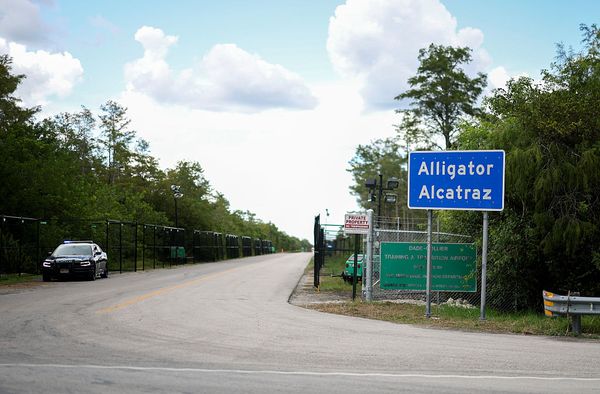As the seemingly unremarkable ZZ-343 aircraft taxies along the apron at RAF Brize Norton, it passes the vibrant union flag livery of its distinctly more glamorous twin the Vespina, emblazoned with the words “United Kingdom”.
The planes are fine examples of these islands’ genius for compromise. They’re passenger carriers that are also airborne fuel tankers, known as Voyager. Vespina is fitted out to carry royalty and other British VIPs – but put to better use by the military most of the time.
On this autumnal evening, ZZ-343 left her sibling on a once almost unimaginable mission. Part of Operation Eastern Sentry, she is carrying fuel to Typhoon fighter jets patrolling the skies over Poland to see off Russian invaders.
Inconceivable at the end of the 20th century, Eastern Sentry is now what passes for a “norm”. The hybrid Voyager aircraft is now engaged in hybrid warfare with Russia that’s heating up and defining the early decades of this century.
Still in British air space, ZZ-343 begins to carve ovals in the dark sky. Two Typhoons emerge from the gloom, green lights on their sides and tails flashing. Pulling alongside the Voyager, the fighters fill up before racing off to Poland as part of the Nato-wide response to Russia’s drone assaults there.
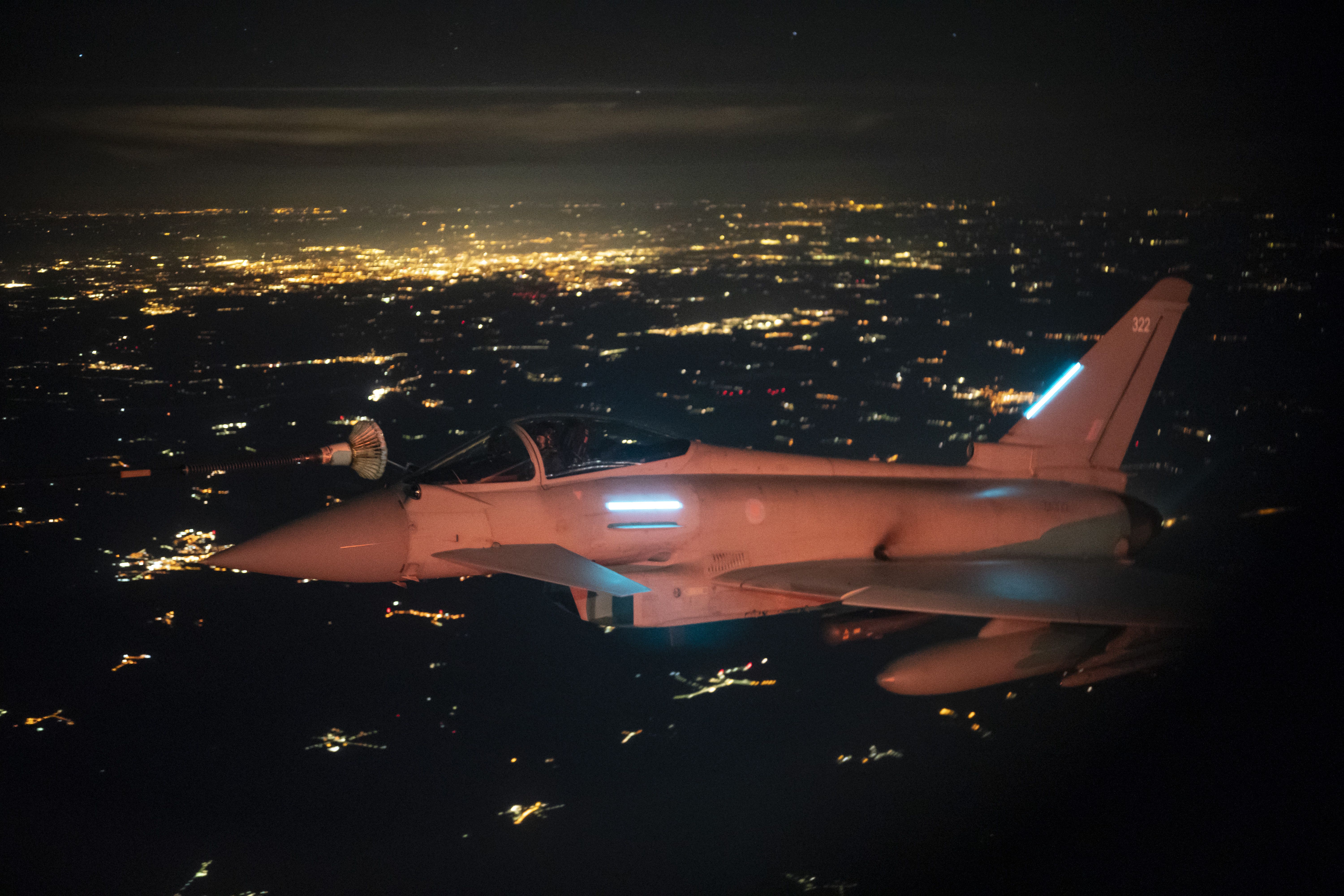
One struggled to latch on, rearing and bucking in turbulence as it approached a pipe that has been wound out of the left wing of the Voyager. Its companion is already guzzling on the right wing.
It takes nerve to force the Typhoon jet hard through the churning air – a fireball in the sky the only consequence of a miscalculation of margins measured in inches.
The Voyager feeds about two tonnes of fuel into each of the fighters who stay alongside the mothership before darting away into the black. Below the North Sea glistens – a few patches of orange light spatter its surface – with ships thousands of feet below.
Some, perhaps, are part of Russia’s shadow fleet of tankers, smuggling fossil fuels to sell for cash that helps power Vladimir Putin’s old-fashioned war on the ground in eastern Ukraine.
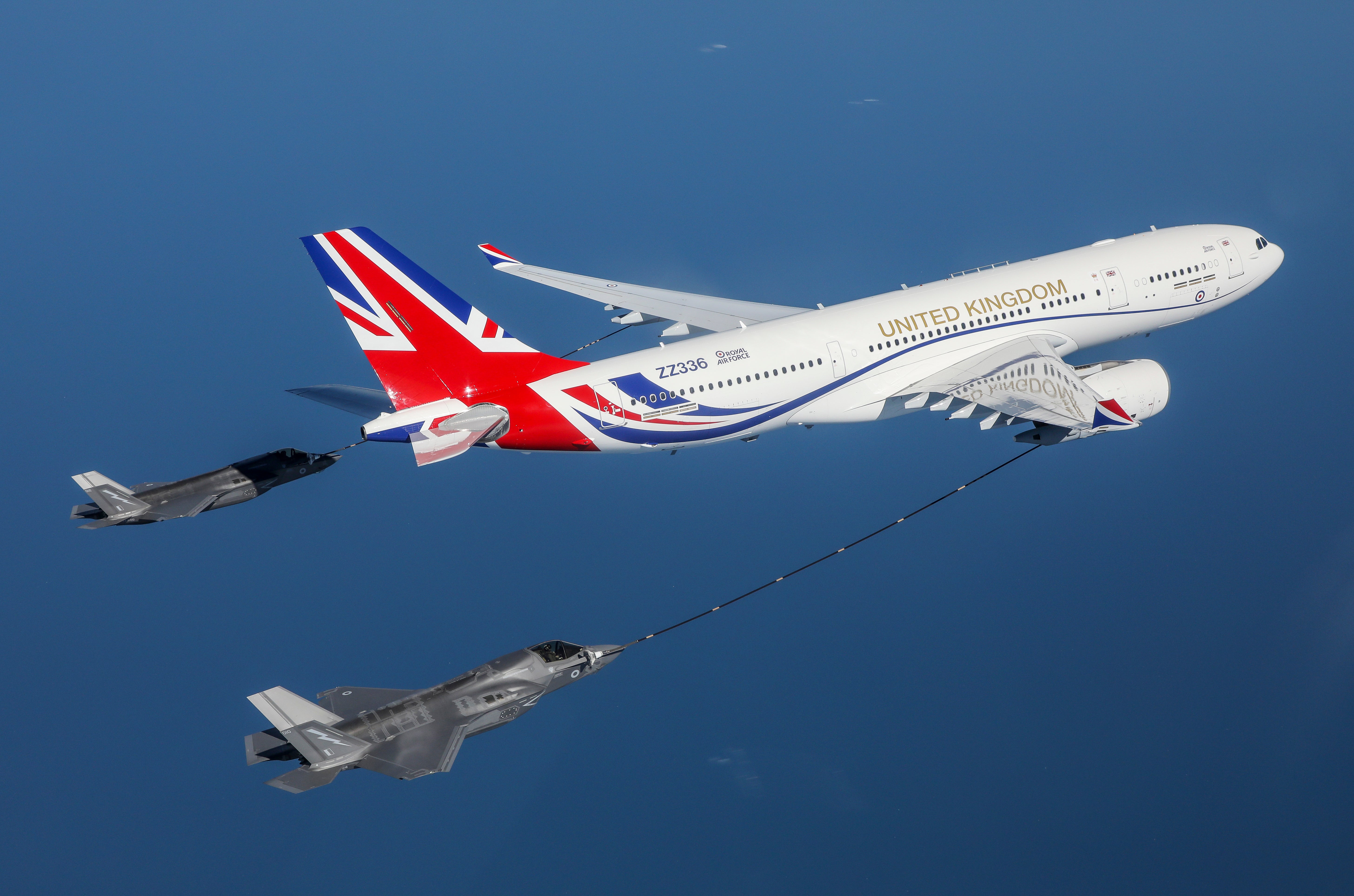
Last weekend, French commandos raided and captured the Baracay, a ship suspected of being used by Russia as a platform for drones that had disrupted Danish airspace. It had already been under sanctions for fuel smuggling.
This week, Danish intelligence said they had multiple examples of Russian warships tracking their aircraft with weapons systems.
Danish Defence Intelligence Service director Thomas Ahrenkiel explained: “Russia is using military means, including in an aggressive way, to put pressure on us without crossing the line into armed conflict.”
Late last month, Estonian airspace was violated by three Russian fighters for 12 minutes. And before that, Poland saw some 23 Russian drones fly into its airspace. They turned out to be unarmed and some were shot down.
This penetration of sovereign airspace is both a warning, a threat and a test by Russia.
For all of these incursions, Nato’s response has been swift, with the mobilisation of a multinational effort over Poland to reassure Warsaw and show the Kremlin that the alliance remains robust and healthy.
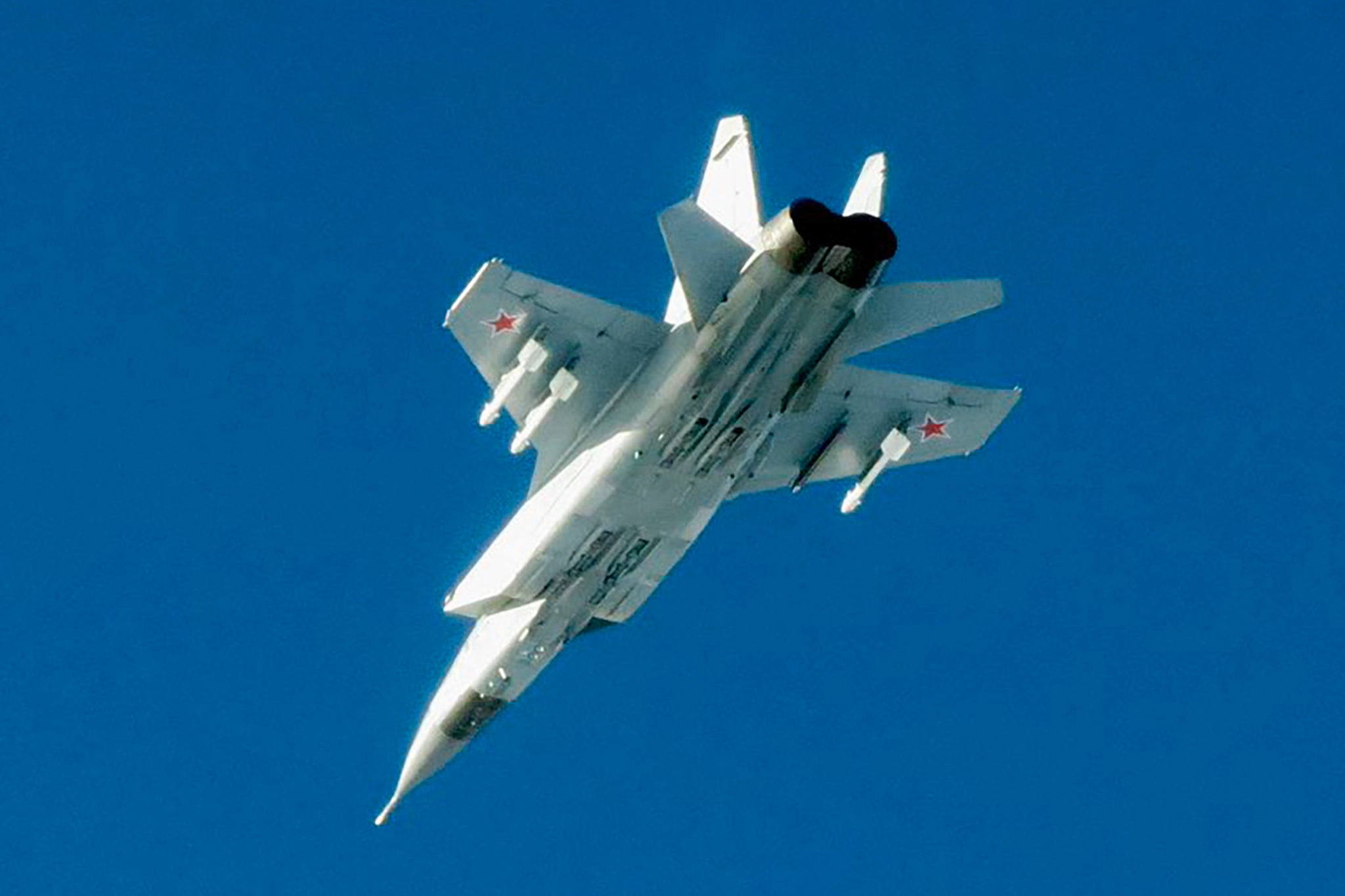
But Putin’s hybrid warfare has been effective in inflaming existing political infections across the West. His support for Brexit, far-right parties in Europe, the magnification of extremist perspectives by Russian bot farms, and useful idiots on both sides of the Atlantic have all combined to weaken Western democracy and alliances.
Russia’s population is roughly a third of the European and UK’s combined. It’s economy amounts to about a tenth of the size of the EU plus UK.
But the Kremlin’s efforts to undermine Western institutions have allowed it to punch well above its weight.
In response, the UK has sanctioned Russian spy agency the GRU and several of its spooks.
In July the Foreign Office said that “the GRU routinely uses cyber and information operations to sow chaos, division and disorder in Ukraine and across the world with devastating real-world consequences”.
Donald Trump has, until recently, indicated more support for Putin’s campaigning in Ukraine than he has for defending democracy.
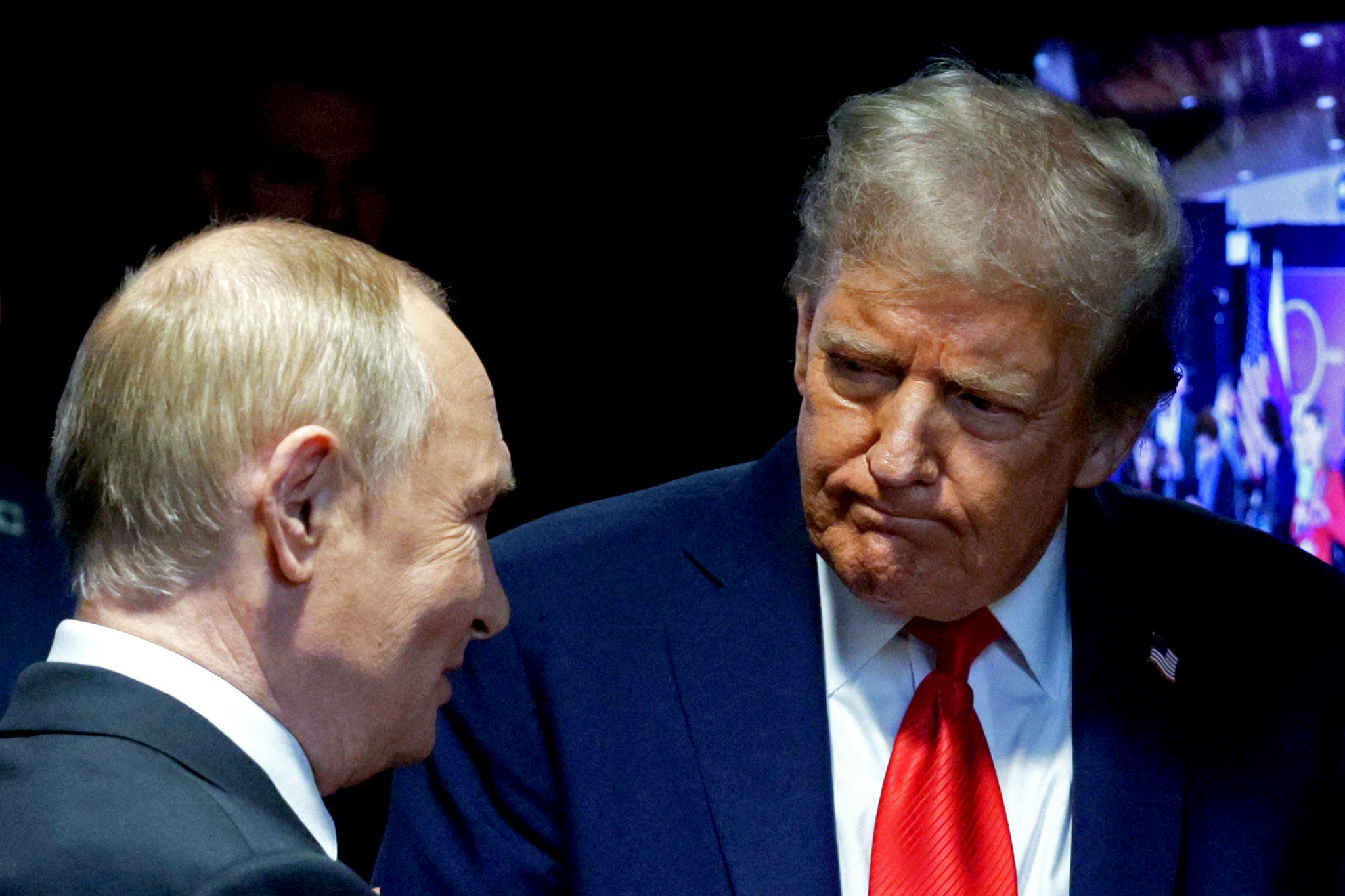
Ironically his wavering leadership of the West has meant that Nato and other allies have hardened their own efforts at defence.
Trump has demanded that Nato’s members outside the US contribute a bigger, and fairer, share of their budgets to defence. They’ve mostly committed to upping their efforts from below 2 per cent of GDP to 3.5 per cent and are making noises about going to five.
So the RAF Voyager flights in support of Typhoons are just part of Nato’s hardening of its conventional defences.
Many in the alliance hope that such efforts will be the end of friction, but in hybrid warfare there are only beginnings.

